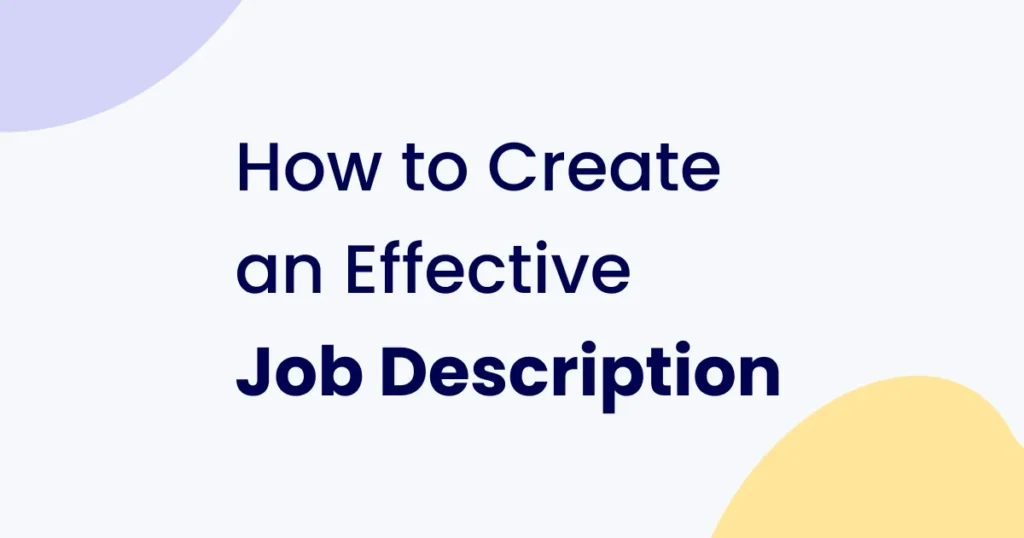Introduction
An expertly crafted job description is essential for drawing in top talent in the dynamic fields of human resources (HR) and recruiting. Human resource information systems (HRIS) and applicant tracking systems (ATS) must be strategically used to manage the difficulties of hiring. With an emphasis on the use of technology and practical HR tactics, this guide seeks to demystify the fundamental components of job descriptions and expedite the hiring process.
Introduction and Company Overview
Start with a job title that is clear, strategic, and fits well with your organization’s requirements. Remove any internal titles or language that might confuse candidates from outside the company. An unambiguous job title not only makes the position easier for prospective candidates to understand, but it also makes using the application tracking system (ATS) more effective.
Introduction and Company Overview
Give a brief synopsis of the business at the outset of the job description, highlighting its goals, core principles, and work environment. This helps bring like-minded people who have similar beliefs and aspirations together by giving candidates a thorough grasp of the organization’s identity.
Job Overview and Responsibilities
Provide a concise explanation of the main duties and obligations of the role in the form of bullet points. Make use of the ATS’s features to expedite the process of finding applicants who possess the requisite training and expertise. Provide precise information about the job’s responsibilities to draw applicants who support the company’s strategic goals.
Qualifications and Requirements
List the necessary credentials and specifications in a methodical manner, making a distinction between “must-haves” and “nice-to-haves.” This optimizes the employment process by acting as an inbuilt filter to make sure that only applicants who meet the requirements submit an application.
Skills and Competencies
Describe the technical know-how and proficiencies required to succeed in the position. Incorporate both hard and soft talents; highlight attributes that support productive teamwork and a pleasant work atmosphere. To expedite the evaluation of skills and match applicants with organizational requirements, make use of HRIS.
Company Benefits and Perks
Emphasize the extensive array of perks and advantages provided by the organization, including flexible work hours, retirement plans, health insurance, and professional development possibilities. This encourages prospective applicants to investigate prospects within the company by acting as a motivating element.
Application Process
Clearly outline the application process, including details on submission deadlines, required documents, and additional steps in the recruitment process. A transparent application process, facilitated by ATS, enhances the candidate experience and streamlines the recruitment journey.
Equal Opportunity Employer Statement
Add a statement reiterating the company’s dedication to equal employment opportunities and diversity. This exhibits inclusion and conveys to potential employees the company’s value of diversity, which is essential to contemporary HR.
Conclusion
In the HR industry, creating a compelling job description is essential to drawing in top candidates. ATS and HRIS are examples of technology that firms may strategically leverage in conjunction with transparent and inclusive policies to improve their recruiting processes. This will help them identify candidates who can eventually make major contributions to the success of the organization.
